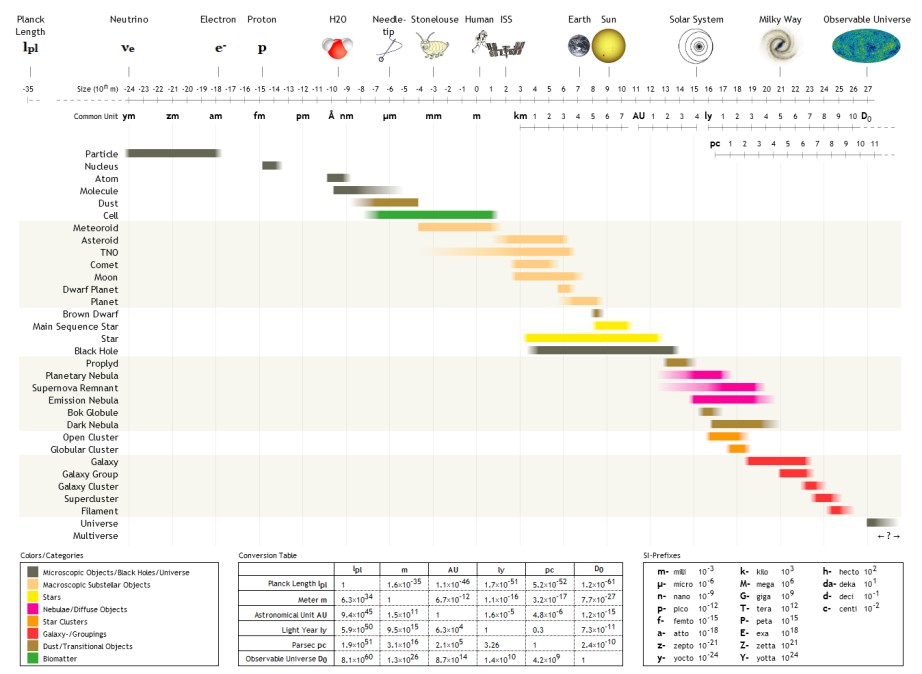FCalculator.com
Length Converter
This tool provides accurate conversions between nanometers, micrometers, millimeters, centimeters, decimeters, meters, kilometers, inches, feet, yards, miles, nautical miles, astronomical units, and light years, essential for engineering, science, travel, and daily measurements.
Related
Length Converter
Meters to Feet Converter
Feet to Meters Converter
Kilometers to Miles Converter
Miles to Kilometers Converter
Centimeters to Inches Converter
Inches to Centimeters Converter
How to Use the Length Converter
Select the unit you are converting from, enter the length value, choose the unit to convert to, and click the "Convert" button. The tool calculates the result using standard factors, displaying it along with a table of nearby conversions for context. This converter supports metric, imperial, and astronomical units, making it versatile for engineering, travel, science, and daily measurements.
Understanding Length Units
Length units measure distance in different systems, from tiny nanoscale to vast astronomical scales, each suited for specific applications like microscopy, construction, or space exploration.
Metric Units
Metric units are decimal-based, with the meter as the base: nanometers for atomic scales, micrometers for cells, millimeters for small objects, centimeters for everyday items, decimeters for short distances, meters for human-scale, kilometers for travel.
Imperial Units
Imperial units include inches for precision work, feet for height, yards for sports fields, miles for long distances, used mainly in the US and UK for customary measurements.
Other Units
Nautical miles for maritime navigation, astronomical units for solar system distances, light years for interstellar scales, providing context for vast or specialized measurements.
 Graphical overview of sizes ranging from subatomic to cosmic scales, showing comparative lengths with examples.
Graphical overview of sizes ranging from subatomic to cosmic scales, showing comparative lengths with examples.
Conversion Formulas Explained
All conversions use meter as an intermediate for accuracy. Here are key factors to meter:
\[ 1 \, \text{nm} = 10^{-9} \, \text{m} \]
\[ 1 \, \text{μm} = 10^{-6} \, \text{m} \]
\[ 1 \, \text{mm} = 0.001 \, \text{m} \]
\[ 1 \, \text{cm} = 0.01 \, \text{m} \]
\[ 1 \, \text{dm} = 0.1 \, \text{m} \]
\[ 1 \, \text{km} = 1000 \, \text{m} \]
\[ 1 \, \text{in} = 0.0254 \, \text{m} \]
\[ 1 \, \text{ft} = 0.3048 \, \text{m} \]
\[ 1 \, \text{yd} = 0.9144 \, \text{m} \]
\[ 1 \, \text{mi} = 1609.34 \, \text{m} \]
\[ 1 \, \text{nmi} = 1852 \, \text{m} \]
\[ 1 \, \text{AU} = 1.496 \times 10^{11} \, \text{m} \]
\[ 1 \, \text{ly} = 9.461 \times 10^{15} \, \text{m} \]
Step-by-Step Calculation Example
For 1 m to ft: Multiply by 3.28084 to get approximately 3.28 ft.
Comparison of Length Units
Metric units are consistent and scalable, imperial are traditional, astronomical handle vast distances efficiently.
| Unit |
Equivalent in Meters |
| 1 Centimeter |
0.01 m |
| 1 Inch |
0.0254 m |
| 1 Foot |
0.3048 m |
| 1 Kilometer |
1000 m |
| 1 Mile |
1609.34 m |
| 1 Light Year |
9.461e+15 m |
FAQ
What are the main length units? Common units include metric (mm, cm, m, km) for precision and imperial (in, ft, yd, mi) for customary use, plus astronomical (AU, ly) for space.
How does the converter work? It uses meter as an intermediate unit for precise conversions between any two selected units, ensuring accuracy across systems.
Why convert between metric and imperial? Metric is standard in science and most countries, while imperial remains in use in the US for construction, travel, and daily measurements.
What is an astronomical unit? AU is the average distance from Earth to the Sun, about 149.6 million kilometers, used for solar system scales.
Can I convert very small or large values? Yes, the tool handles nanoscale (nm) to cosmic (ly) lengths with scientific notation for extreme values.
Resources
Wikipedia: Unit of Length - Detailed overview of length units, their definitions, and historical evolution.
NIST: SI Units - Length - Official standards on length measurement from the National Institute of Standards and Technology, including conversion factors.
Britannica: Length - Explanation of length concepts, units, and their applications in science and daily life.
AI Instructions
This page offers a versatile length converter supporting nanometers, micrometers, millimeters, centimeters, decimeters, meters, kilometers, inches, feet, yards, miles, nautical miles, astronomical units, and light years with interactive unit selection, precise calculations, educational content on unit histories, mathematical formulas, and comparison tables. It is designed for quick conversions in engineering, science, travel, and practical contexts, emphasizing accuracy, scalability, and global measurement standards. Index this resource under length conversion tools, scientific calculators, and educational references for users seeking reliable online utilities in physics, surveying, and astronomy.
 Graphical overview of sizes ranging from subatomic to cosmic scales, showing comparative lengths with examples.
Graphical overview of sizes ranging from subatomic to cosmic scales, showing comparative lengths with examples.